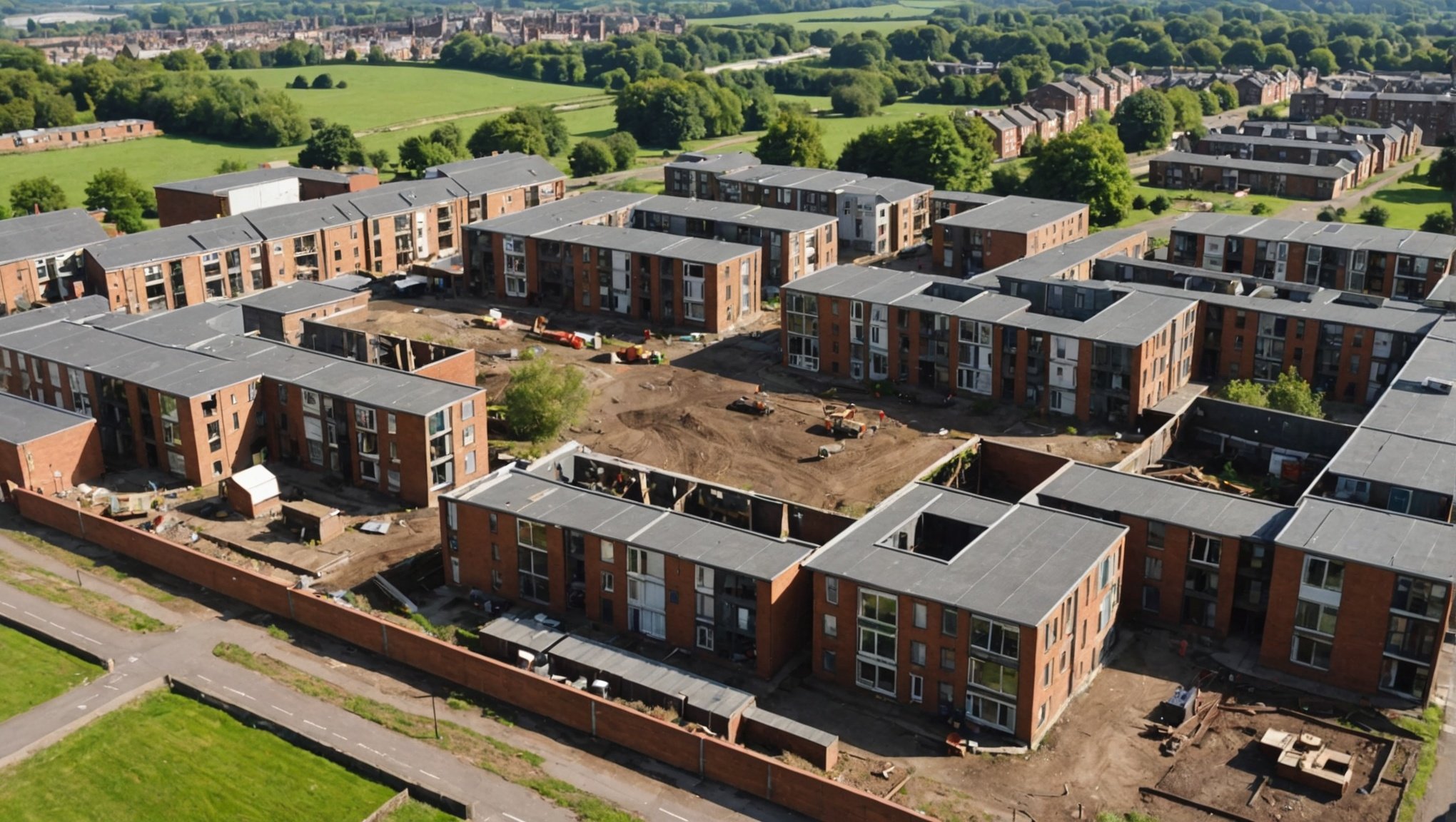Maximizing Opportunities: Innovative Strategies for Developing Housing on Brownfield Sites in the UK
The Potential of Brownfield Sites
Brownfield sites, often referred to as previously developed land, present a significant opportunity for housing development in the UK. These sites, which have been used before for industrial, commercial, or other purposes, can be repurposed to address the country’s pressing housing needs. However, developing these sites is not without its challenges.
One of the primary hurdles is the financial viability of such projects. Traditional urban development typically requires sites that can deliver 40 homes or more to be economically feasible, but smaller brownfield sites often struggle to meet this threshold due to higher development costs and lower returns.
In the same genre : Top Strategies for Seamlessly Integrating Renewable Energy Storage into Your Home
Government Support and Funding
To overcome these challenges, the UK government has introduced several initiatives and funding mechanisms to support brownfield development. Homes England, a key player in this sector, offers a range of funds designed to bring forward strategic sites and housing-led opportunities.
- Affordable Homes Programme: This program provides grant funding to affordable housing providers, enabling them to build social and affordable rented homes, supported accommodation, and shared ownership homes.
- Levelling Up Home Building Fund: This fund offers development loans to small and medium housebuilders who face difficulties in accessing traditional financing routes. It also supports complex funding arrangements such as balance sheet loans and equity investments in joint ventures.
- Brownfield, Infrastructure and Land Fund: This is one of the most flexible funds, aimed at bringing forward strategic sites and housing-led opportunities that support economic growth and long-term housing supply.
These funds are crucial in making brownfield development more attractive and viable for developers.
Additional reading : Top Strategies for Seamlessly Integrating Renewable Energy Storage into Your Home
Planning Policy and Regulatory Framework
The planning policy landscape in the UK is evolving to favor brownfield development. Here are some key aspects of the current and proposed planning policies:
- National Planning Policy Framework: This framework emphasizes the importance of reusing previously developed land, particularly in urban areas, before considering green belt land. It encourages local planning authorities to prioritize brownfield sites for new housing.
- Planning Triage System: The government has proposed a ‘planning triage’ system to help infrastructure investors navigate the planning process more efficiently. This system aims to streamline the application process, making it easier for developers to secure approvals for brownfield projects.
Local and Partnership Approaches
Effective development of brownfield sites often requires strong local partnerships and a place-based approach. Here’s how local authorities and partnerships can make a difference:
- Local Government Capacity Centre: Homes England’s Local Government Capacity Centre provides learning programs and support to increase the capacity and skills of local government and their partners. This includes training for housing and regeneration professionals, which helps in developing and implementing effective local planning policies.
- Place-Based Working: Homes England works closely with local authorities and stakeholders to understand their housing and regeneration priorities. They coordinate practical packages of support to help achieve local visions for urban uplift and community development.
Best Practices and Sustainable Development
Innovative strategies for brownfield development also focus on best practices and sustainable development. Here are some key considerations:
- Sustainable Practices: Promoting sustainable practices is a core part of Homes England’s strategy. This includes minimizing environmental impact, maximizing positive contributions, and supporting the use of modern methods of construction.
- Design and Safety Standards: Ensuring good design and raising building safety standards are essential. Homes England encourages developers to adopt high-quality design principles and adhere to stringent safety standards, which not only enhance the quality of new homes but also contribute to the overall wellbeing of communities.
Practical Insights and Actionable Advice
For developers and local authorities looking to maximize the potential of brownfield sites, here are some practical insights and actionable advice:
Key Considerations for Developers
- Site Assessment: Conduct thorough site assessments to identify potential environmental and structural challenges.
- Contamination: Many brownfield sites are contaminated, so it’s crucial to assess and remediate the land before development.
- Infrastructure: Evaluate the existing infrastructure and plan for necessary upgrades or new installations.
- Community Engagement: Engage with local communities early in the development process to understand their needs and concerns.
- Consultation: Hold public consultations to gather feedback and build support for the project.
- Inclusive Design: Incorporate community feedback into the design process to ensure the development meets local needs.
Tools and Resources
- Homes England’s Land Hub: Utilize Homes England’s interactive map to find sites intended for sale within the next six months. This can be a valuable resource for identifying potential brownfield sites.
- Funding Opportunities: Explore the various funding options available through Homes England and other government initiatives to support your project financially.
Example of Successful Brownfield Development
- The English Cities Fund: This is a partnership between Homes England, Legal & General, and the Homes and Communities Agency. It has successfully transformed previously developed land into vibrant communities, demonstrating the potential of collaborative efforts in brownfield development.
Table: Comparison of Key Funding Mechanisms
| Funding Mechanism | Primary Objective | Eligible Recipients | Key Features |
|---|---|---|---|
| Affordable Homes Programme | Provide grant funding for affordable housing | Affordable housing providers | Supports social and affordable rented homes, supported accommodation, and shared ownership homes |
| Levelling Up Home Building Fund | Offer development loans to small and medium housebuilders | Small and medium housebuilders | Supports complex funding arrangements, balance sheet loans, and equity investments |
| Brownfield, Infrastructure and Land Fund | Bring forward strategic sites and housing-led opportunities | Developers and local authorities | Focuses on economic growth and long-term housing supply |
| Cladding Safety Scheme | Remediate buildings with dangerous cladding | Building owners and managers | Provides funding for remediation of buildings between 11 and 18 meters high |
Quotes and Perspectives
- “Our role is to support and enable local authorities and other stakeholders to achieve their vision for their area. We will work with local leaders to understand their housing and regeneration priorities and challenges,” – Homes England.
- “Targets for social rent homes, genuinely affordable homes, and homes built on brownfield sites might better support the Government’s stated ambitions,” – CPRE.
Developing housing on brownfield sites in the UK is a complex but highly rewarding endeavor. With the right combination of government support, innovative planning policies, and a focus on sustainable development, these previously developed lands can be transformed into vibrant communities that meet the housing needs of the future.
By leveraging the various funding mechanisms, engaging with local communities, and adopting best practices, developers and local authorities can unlock the full potential of brownfield sites. As the UK continues to evolve its planning policies and regulatory frameworks, the opportunities for brownfield development are set to grow, offering a promising solution to the country’s housing challenges.










